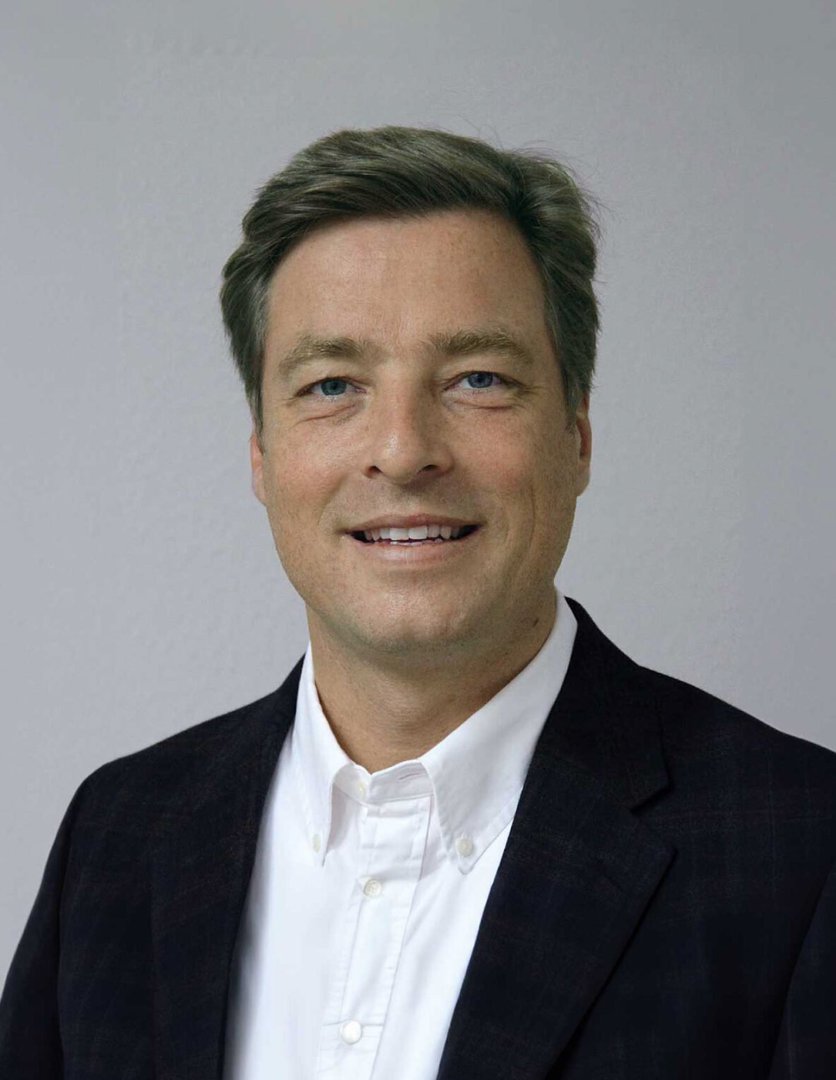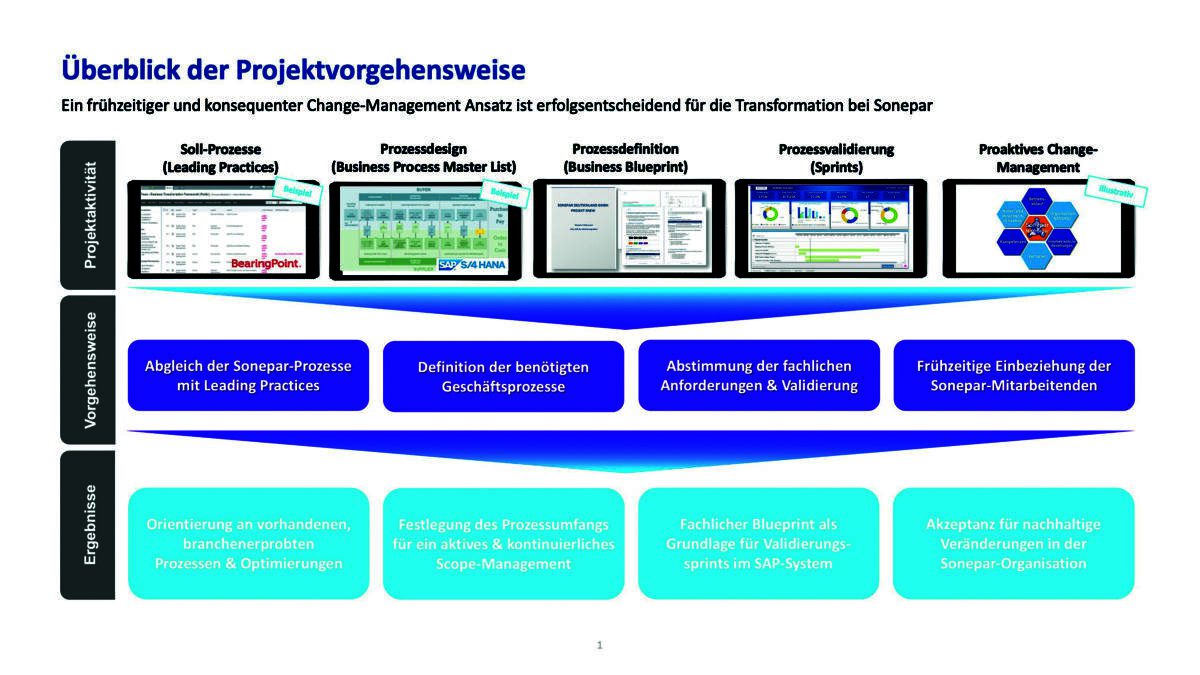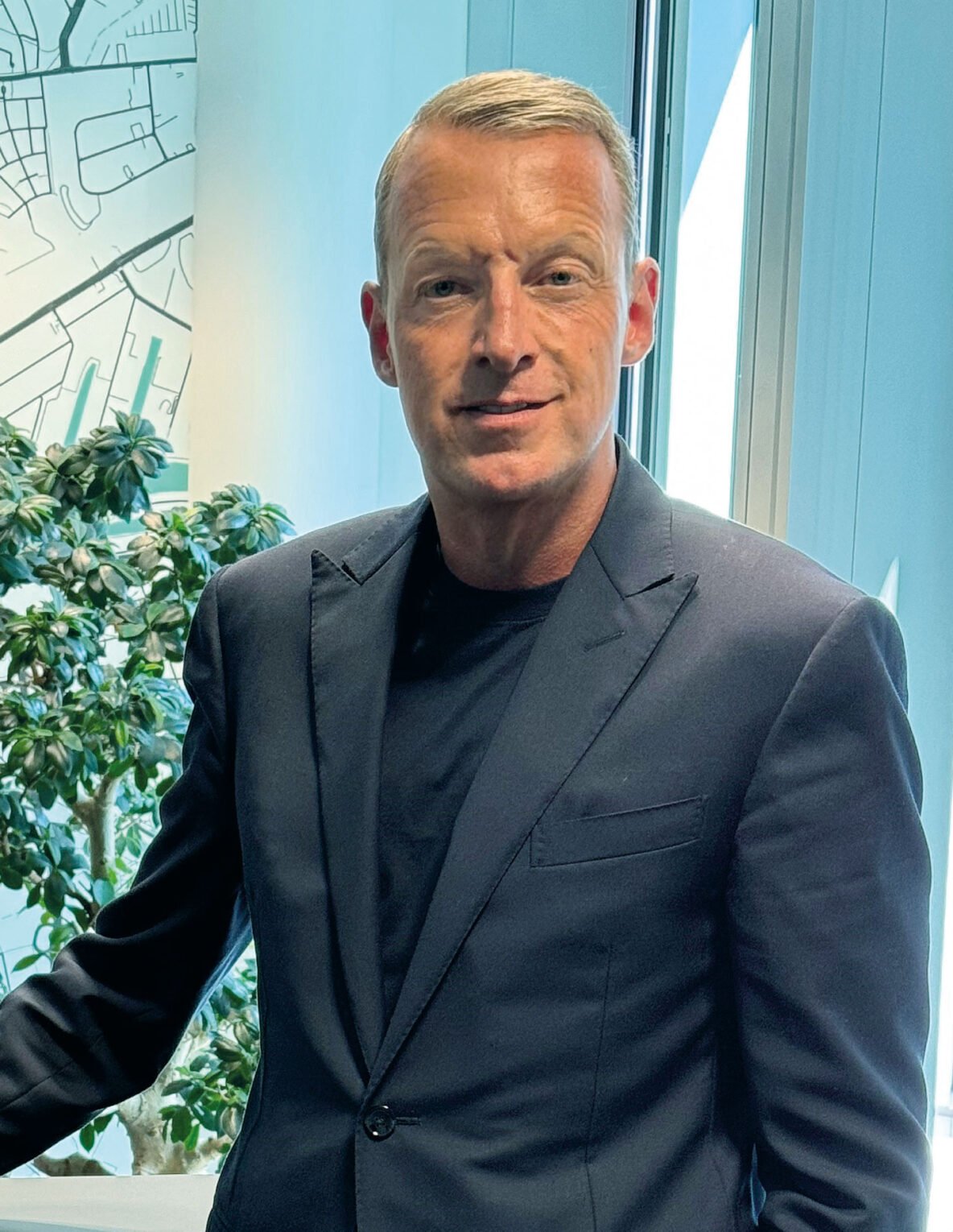Digitalization in Industry and Retail


Technical progress and global developments are forcing companies to constantly adapt their IT systems. Experience and reports from the SAP community show that such projects are usually more complex and time-consuming than expected. IT development and the pressure on the economy to adapt are putting SAP customers under pressure. Companies cite organizational adjustments - i.e. restructuring - as the most common reason for an IT transformation, see also the Sonepar info box.
Andreas MoellerSVP IT Sonepar Central & Nordic Europe, explains at the beginning of the interview with E3 magazine: "The transformation process at Sonepar was started to harmonize and standardize the highly fragmented and inefficient IT landscape. Our mainframe-based environment was outdated and did not offer sufficient scalability. With SAP S/4 Hana, we have implemented a future-proof ERP solution."
The official start of the transformation process at Sonepar in Germany took place with the introduction of S/4 Hana in mid-2021. S/4 had already been selected as the core solution for Sonepar's new standardized and modern process and system landscape. Andreas Moeller describes the process as follows: "The roll-out began with an initial transformation of a small company and was then gradually extended to other regions. By 2024, several regional companies had already been successfully converted to SAP S/4 Hana."

A recent study conducted this year by two SAP partners shows that around a third of IT users have started transformation processes in order to realign their organization. The strategic management of transformation projects is becoming increasingly relevant. "Yes, when we introduced SAP S/4 Hana at Sonepar, we used the transformation process to restructure our organization," confirms Andreas Moeller. "In addition to modernizing our IT systems, we reviewed, optimized and in some cases adapted our business processes in order to work more efficiently. As a result, we are now in a better position to respond to the new technological possibilities and changing business requirements." The introduction of S/4 at Sonepar was therefore not just an IT project, but also a driver for organizational improvements and adjustments.
Transformation and communication
A key finding of an IT transformation study from this year is that companies often underestimate the challenges of their conversion and digitalization and, above all, the organization of communication between departments and divisions during the process. The lack of existing transformation knowledge in companies and the difficulty of carrying out a detailed analysis of the existing IT landscape and data are also particularly striking. A major problem therefore appears to be the lack of transformation expertise in the company's own workforce. How was Sonepar able to motivate its employees for this transformation process?
"Right from the start, we relied on a clear communication strategy to provide regular updates on the progress and goals of the transformation and to gather feedback," explains Andreas Moeller, adding: "We offer targeted training to ensure that employees can use the new systems effectively. We actively involve our employees through workshops and feedback mechanisms, which enables participation. Managers are trained as role models to lead the teams through the change. We adapt the strategy flexibly through continuous monitoring.
based on feedback and experience."
To summarize: these measures are helping to ensure that the transformation at Sonepar is both technologically successful and positively supported by the employees. The aforementioned transformation study shows that a lack of expertise and a shortage of skilled workers are the main factors slowing down the transformation of existing SAP customers. However, innovative and efficient IT is crucial in order to remain competitive.
Many existing SAP customers see the option of engaging external consultants at an early stage and thus closing the existing skills gap as an essential organizational measure for the successful implementation of their transformation project. The SVP IT Sonepar Central & Nordic Europe, Andreas Moeller, explains in the E3 interview: "We initially commissioned BearingPoint to support our specialist departments in defining technical requirements and the overall scope, with the aim of making extensive use of the SAP standard and avoiding (costly) in-house developments."
Process design and blueprint
The result at Sonepar was a Business Process Master List and a functional blueprint. "As I said, this was closely aligned with the capabilities of the software solution and leading practices," says Andreas Moeller, explaining the company's own transformation process. "After this first phase, we then commissioned BearingPoint with the overall implementation from the end of 2022, with BearingPoint also being supported by other specialized partners. In 2023, we were able to successfully put our first regional company into production with the new solution; a very sporty and ambitious schedule. A few weeks ago, our largest regional company successfully went live."
So what were the specific challenges for Sonepar? "There are several specific challenges in the electrical wholesale sector in which we operate as Sonepar," explains Andreas Moeller. Customers expect high availability, fast, 100 percent reliable delivery times and excellent service, which requires optimal warehouse and logistics management. The industry is evolving rapidly through technologies such as IoT and automation, which requires constant innovation. In an intensely competitive environment, operating costs must always be minimized and efficiency maximized. In addition, there are numerous regulatory requirements regarding safety and the environment that must be complied with at all times.
Managing a global supply chain is complex, with challenges such as supply bottlenecks and transportation costs. "Finally, digital transformation requires significant investment in IT and process optimization to operate more efficiently and offer better digital services. By overcoming these challenges, Sonepar can strengthen its leading position in the market and optimally serve its customers," says Andreas Moeller, describing the current situation.
"Our wide range of products and rapid availability throughout Germany set standards and are highly valued by our customers," says Andreas Moeller, specifying the challenges. "With a clear focus on excellent customer service and tailor-made solutions, we meet the individual needs of our customers in the best possible way. Our global network enables us to master international trade and cooperation efficiently. With our many years of experience and in-depth expertise, we offer our customers competent advice and specialized solutions. Thanks to our innovative strength, we are always able to be one step ahead and set the highest standards in the industry."
By introducing S/4 and other modern systems, Sonepar has further improved its efficiency. Andreas Moeller describes the concept of S/4 conversion: "The overall picture of S/4 conversion at Sonepar includes the use of S/4 Hana as the central ERP solution, including the entire finance processes. We also use Extended Warehouse Management (EWM) in our branches. We have also integrated an SAP commerce solution to support our web store and use Körber as an external warehouse management system. The Business Technology Platform (SAP BTP) is used as the technological platform in some areas. The final productive implementation of S/4 Hana is planned for early 2025."
Legacy IT to S/4 Hana
A major challenge at Sonepar is the transformation from an individual legacy environment to a standardized S/4. "We created detailed implementation plans for each region and carried out secure data migration and integration with other systems," says Andreas Moeller. Good data has always been the basis and fuel for innovative processes. The results of the study also confirm this and show that Only those who keep their data harmonized and centrally available in the appropriate quality will be able to make optimal use of the blessings of technical developments in the future.
But there is more to a successful S/4 conversion, explains Andreas Moeller: "Targeted training prepared our employees for the new systems, while a comprehensive change management program promoted acceptance and support. After implementation, we continuously monitored the performance of SAP S/4 Hana and conducted validation sprints to ensure that the new processes were running smoothly and would be successful in the long term. With this structured approach and the support of our partners such as BearingPoint, we were able to efficiently manage the transformation and realize the full benefits of SAP S/4 Hana."
Sonepar faced several challenges when customizing S/4. "Organizationally, it was challenging to get our specialist departments to use the new possibilities of the SAP solution instead of simply copying the old processes," says Andreas Moeller from his IT practice. From a technical perspective, the integration of S/4 with existing non-SAP systems was complex and required careful planning and data migration. "In terms of licensing law, we had to ensure that all SAP components were properly licensed. By working closely with all partners who supported us in defining and implementing the technical processes, we were able to successfully overcome these challenges," says Andreas Moeller, describing the legal part of the S/4 conversion.

An S/4 conversion is more than just a technical release change: How were the end-to-end processes designed? In which areas and for which tasks was BearingPoint consulted? Did Sonepar or BearingPoint use SAP tools such as Signavio, LeanIX and Cloud ALM? Andreas Moeller answers in the E3 interview: "BearingPoint provided us with their process model, which we adapted to the specific requirements of Sonepar. This Business Process Master List (BPML) formed the procedural framework for the project and supported our scope management. Through iterative validation sprints, we were able to test and optimize the new processes at an early stage. We used the BPML tool and SAP Signavio to visualize and manage the processes."
At the beginning of the transformation, familiarity with the functions of S/4 was limited, Andreas Moeller knows and explains in detail: "Some parts of our company had SAP experience, but for many specialist departments, S/4 Hana was new territory. This knowledge gap was a challenge. To overcome this, we organized specific SAP training courses in close cooperation with our partners. These training courses were intensive and practice-oriented, often directly live on the system, in order to provide our employees with the necessary knowledge. Despite these measures, we found that building up the necessary know-how took longer than expected."
At Sonepar, the transformation was orchestrated as a business project in close cooperation with the specialist department. "That's why we established dedicated specialist managers in the project for the key streams - Order to Cash, Purchase to Pay etc. - who were responsible for designing the content of the new processes and communicating them to the departments. We also looked at cross-departmental integration issues at a very early stage and established a project committee for departmental decisions, for example for questions about what we absolutely needed in the scope of the project or if there were several alternatives for implementation," says Andreas Moeller, explaining the workflow.
Scope and risk management
A clear project plan with defined milestones and strict time and scope management helped Sonepar to keep the project on schedule and avoid major delays. Active risk management was another important aspect. "We regularly identified, evaluated and monitored risks in order to be able to react to changes and new risks," explains Andreas Moeller in the E3 interview. "Working with experienced partners provided valuable support and brought in best practices and specific know-how." Comprehensive testing, including integration testing and user acceptance testing (UAT), ensured that all Sonepar systems and processes functioned smoothly and delivered the desired results. These procedures helped to significantly reduce the risks of implementing S/4 and ensure the success of the transformation. "Last but not least, the step-by-step implementation approach, i.e. in regions, also helped us to minimize the risk for the company as a whole," says Andreas Moeller, describing this success story.

"The biggest challenge in such projects is still a clear definition of the target state, which is why it was very important for us to use a semi-agile approach at Sonepar to validate the possibilities and, in some cases, limitations of the SAP software standard together with the specialist department as early as possible and to complete the new processes iteratively," says Steffen Sattler, Partner at BearingPoint, summarizing the findings. "In addition, in such large and complex transformations, consistent time and scope management is essential, as a project usually does not become more successful the longer it takes. Furthermore, I can only agree with Andreas Moeller: Without early and consistent change management, such a project cannot be successful."
Sonepar in Germany
Andreas Moeller from Sonepar Deutschland Information Services defines the initial situation: "The Sonepar Group is the global market leader in electrical wholesale and has branches in 40 countries. More than 5,000 employees in Germany at 200 locations work hard every day to inspire customers from the electrical trade, retail and industry with our services and make them more successful with individual solutions.
At the beginning of Sonepar's IT transformation process, the IT and organizational structure was heterogeneous. In Germany, Sonepar operated a large number of self-developed solutions in its various regional companies. These solutions had been continuously developed over decades, resulting in a complex and fragmented application landscape. An ERP solution - based on Kobol - was already in use, which was completely customized to the different requirements of individual units.
The transformation process at Sonepar was started to harmonize and standardize the highly fragmented and inefficient IT landscape. Our mainframe-based environment was outdated and did not offer sufficient scalability. With SAP S/4 Hana, we have implemented a future-proof ERP solution that improves our efficiency and flexibility and allows us to react more quickly to market changes. In addition, the introduction of a new web store and an advanced warehouse management solution strengthens our customer-oriented service and increases our competitiveness. Innovative technologies such as machine learning and IoT are driving our digital transformation and opening up new business opportunities."
To the partner entry:






